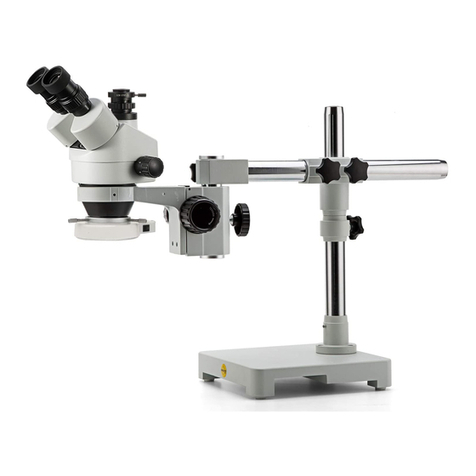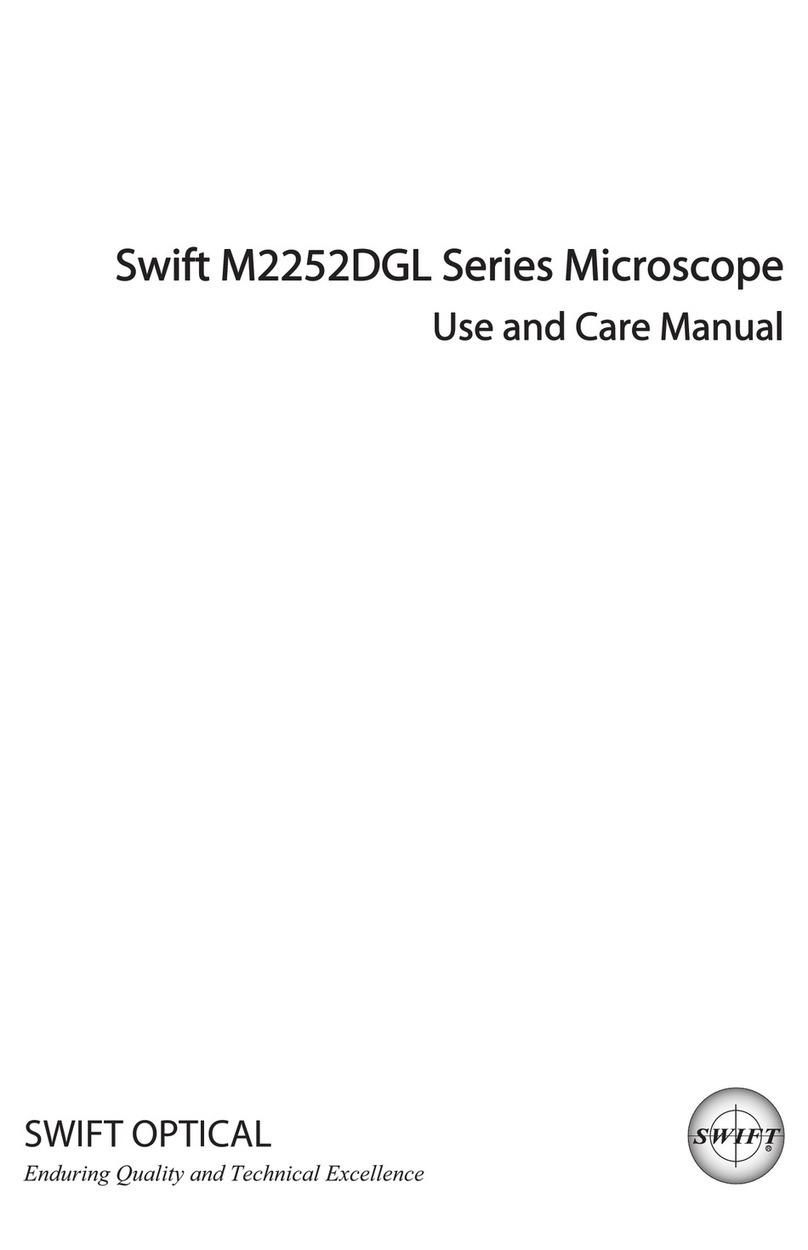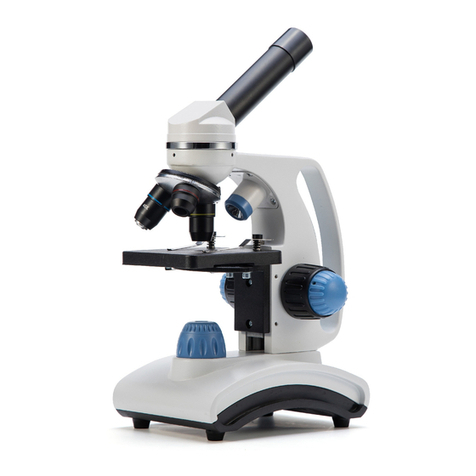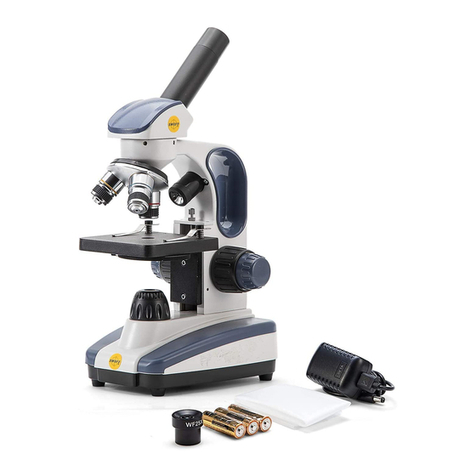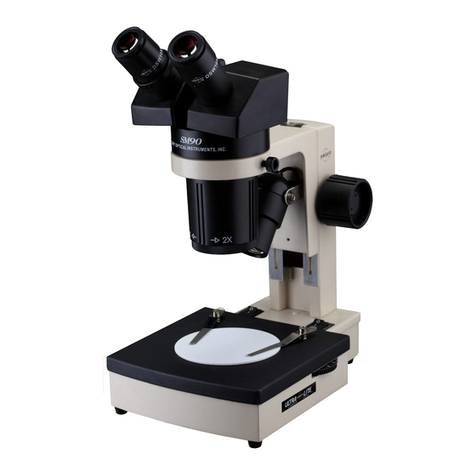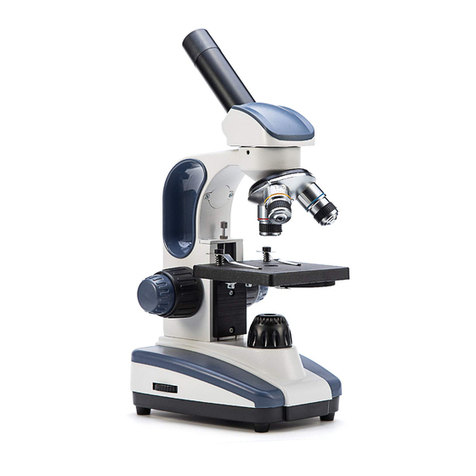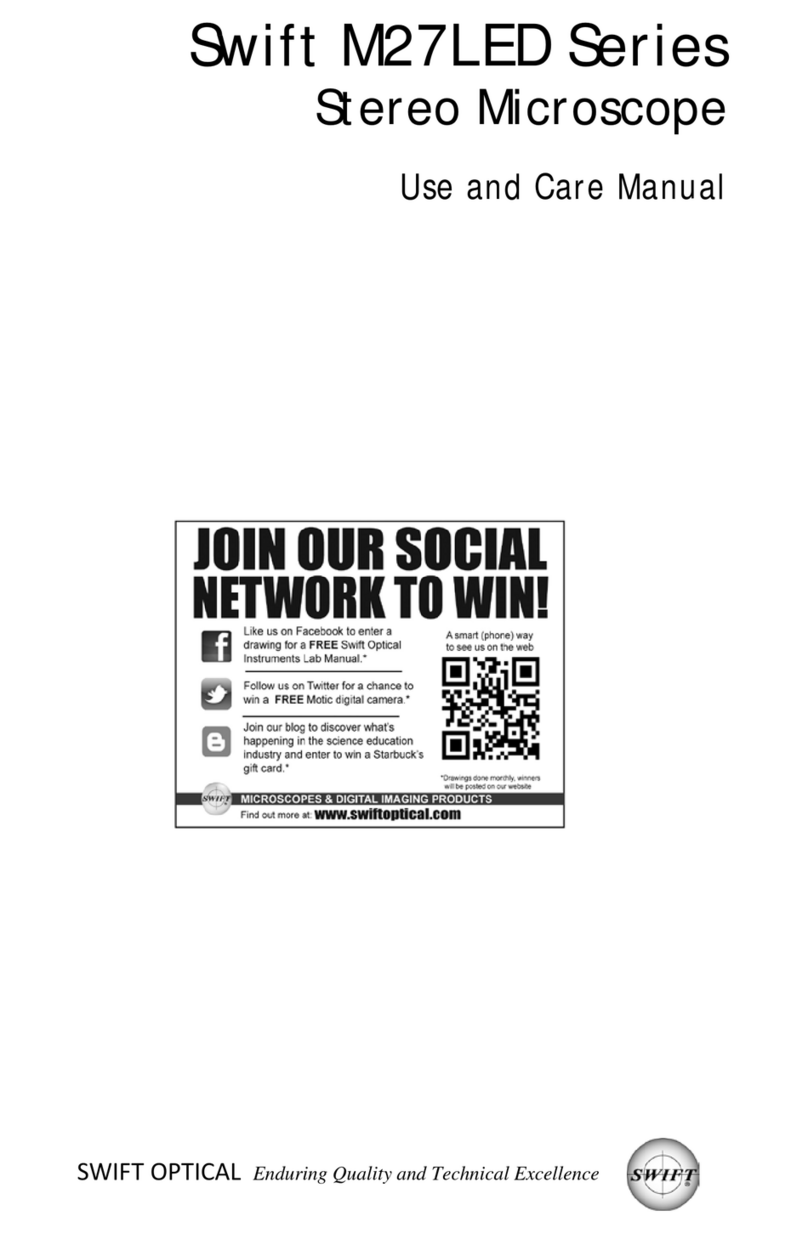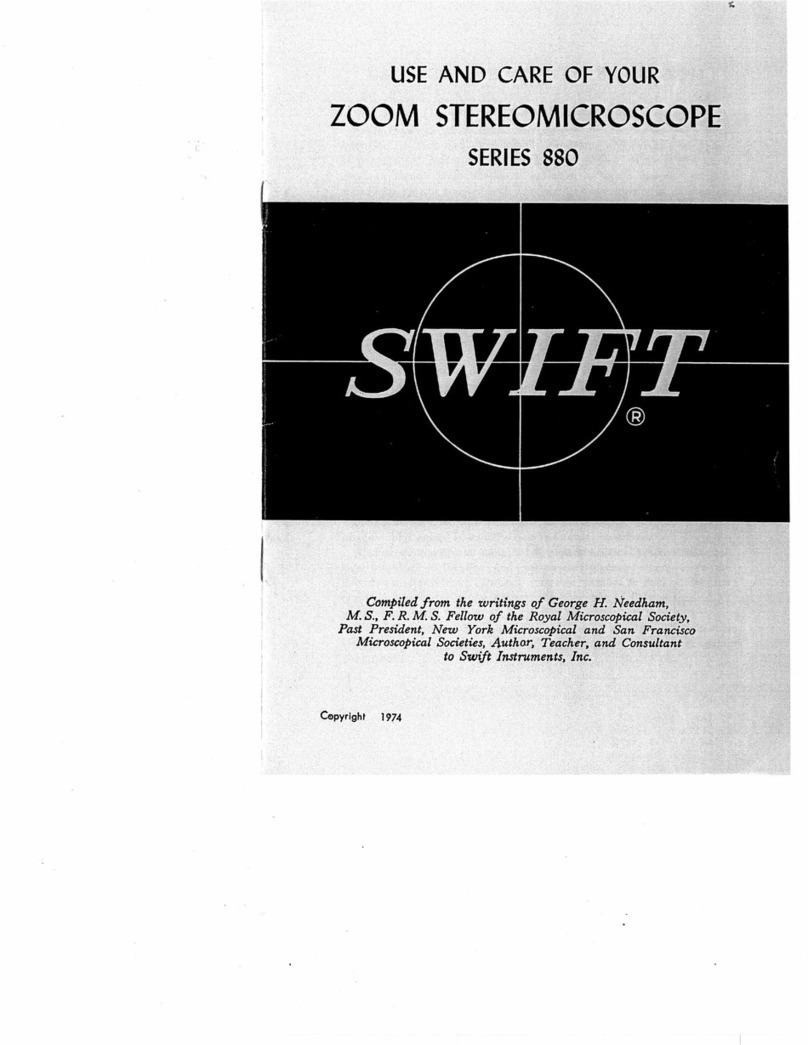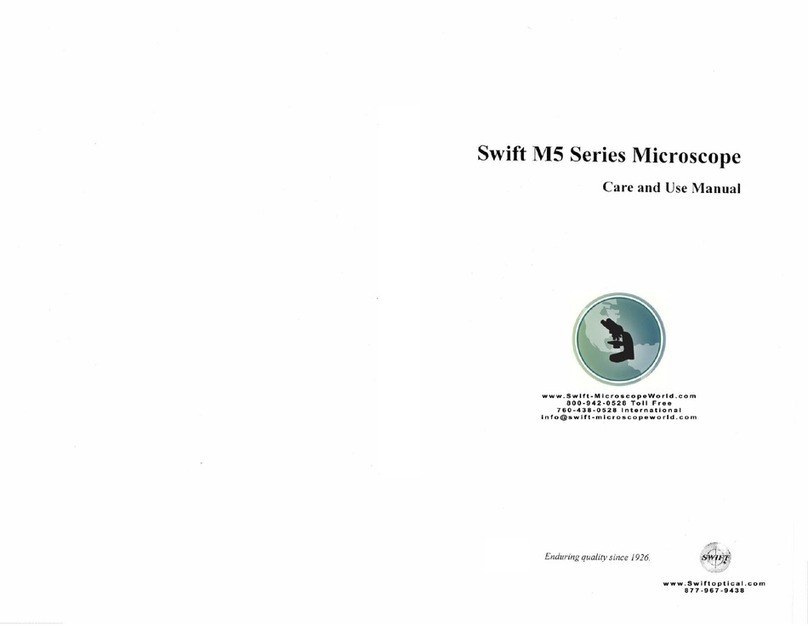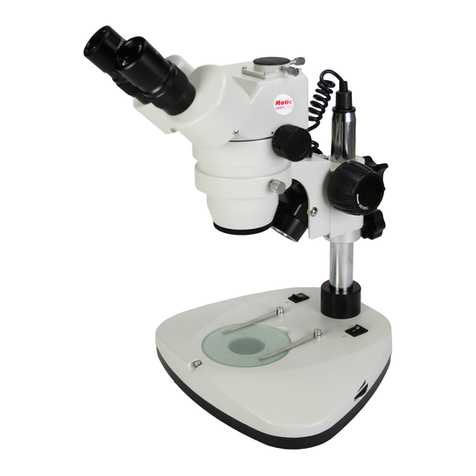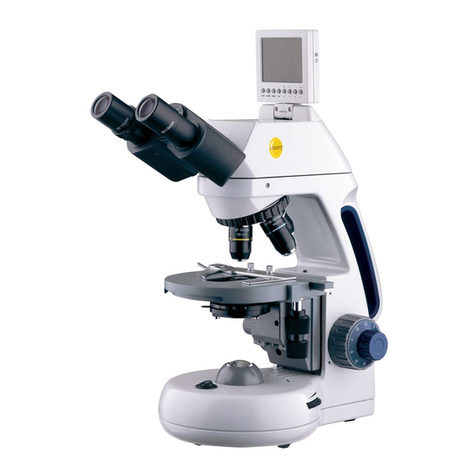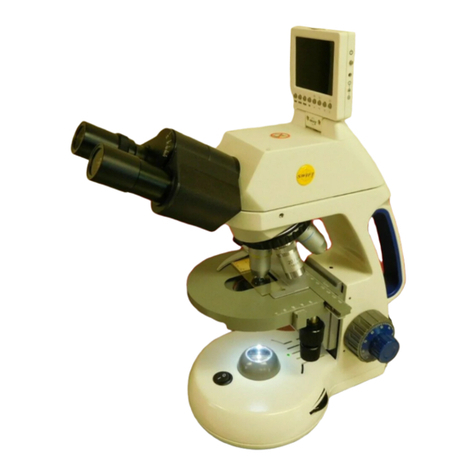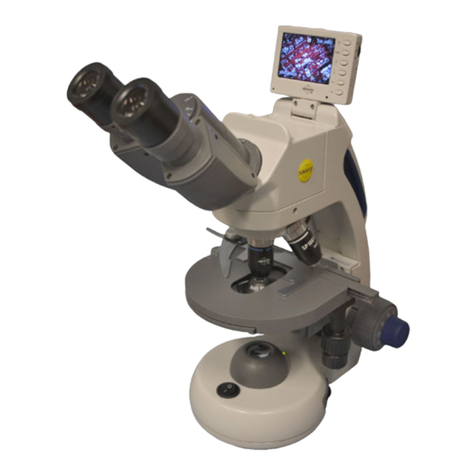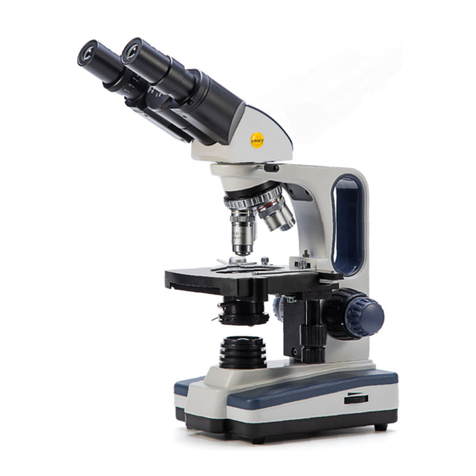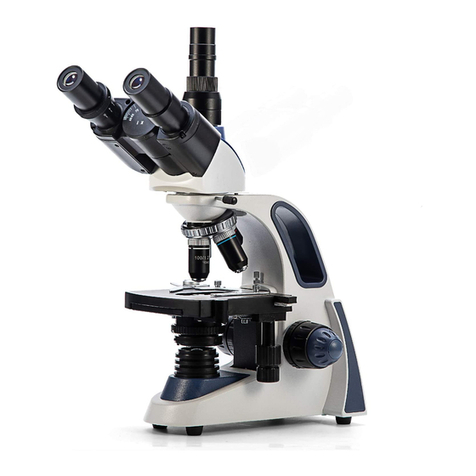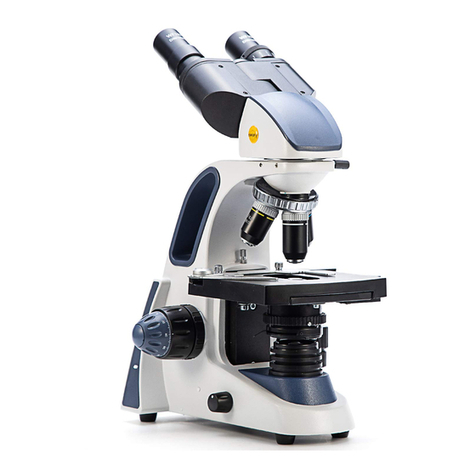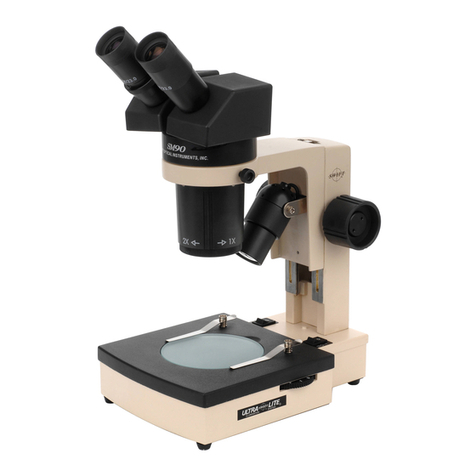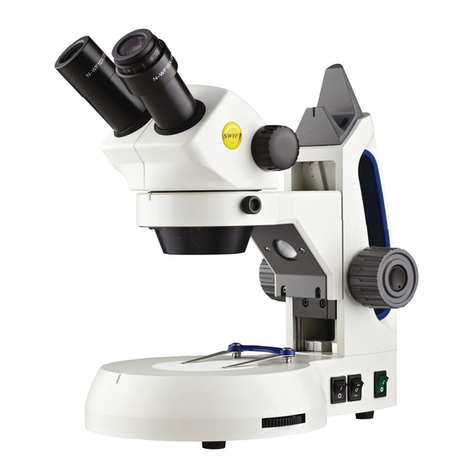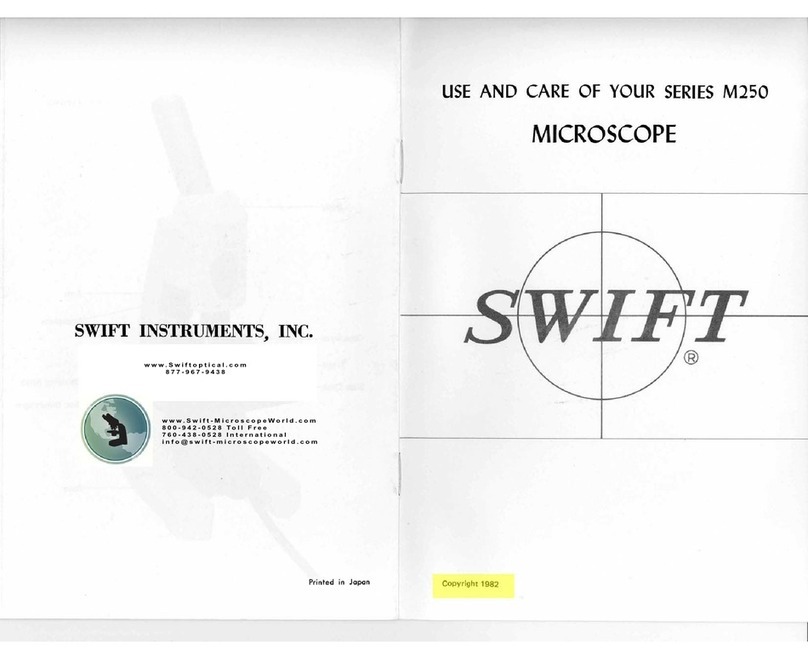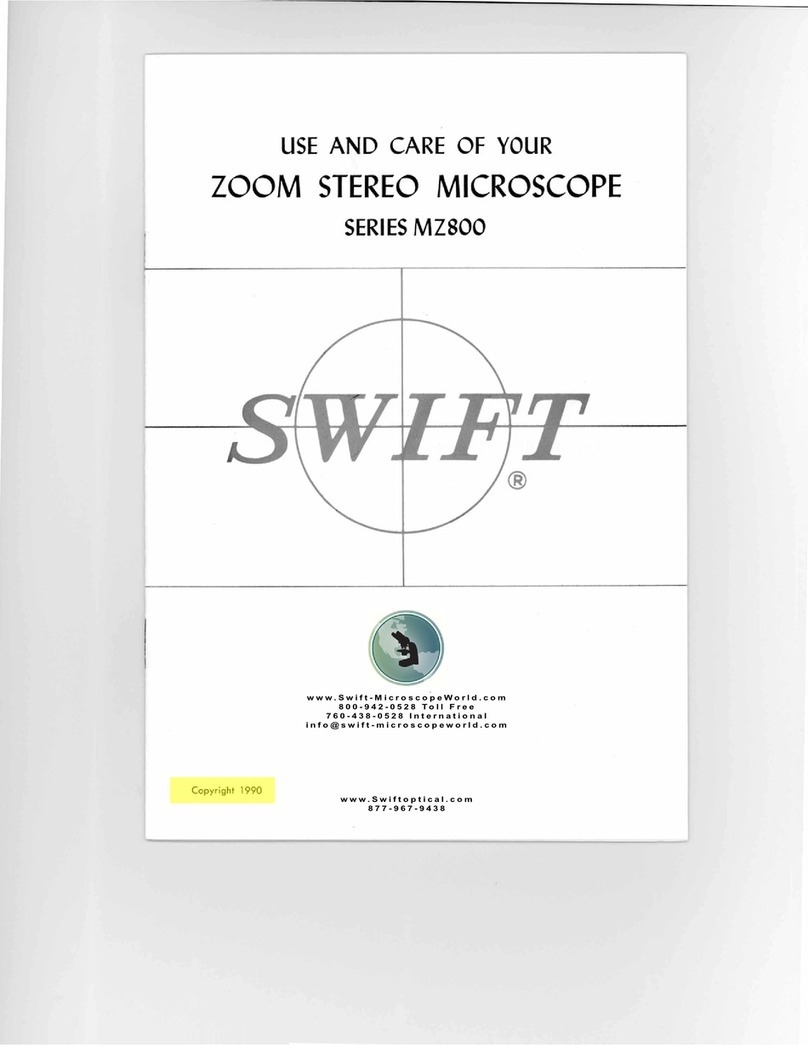8
that once the 4x objective is focused; only a slight turn of the fine focus is
required to refine the focus when changing to higher power objectives.
Step 9: (M3-B only) Set the diopter adjustment which is designed to help
compensate for the difference between the user’s eyes. To adjust, first
bring the specimen into perfect focus by using the coaxial focusing knobs
while looking through the eyepiece with the right eye only (close your left
eye). Now, using your left eye only (close the right eye) turn the left eye
diopter only (don’t touch the focus controls) to obtain a crisply focused
image. The diopter adjustment is now set and no further adjustment will be
needed until a new operator uses the scope.
Please note: a smaller diaphragm aperture (opening) increases the
contrast in the image while a larger aperture decreases the contrast. (The
diaphragm is not intended for controlling the brightness of the illumination).
A good procedure to follow in selecting the proper opening is to start with a
large aperature and reducing it until the fine detail of the specimen is in
exact focus. Using an inappropriate aperture results in a “washing out” of
the image. Care must be exercised not to reduce the aperture too much to
gain high contrast, as then the fine structure in the image of the specimen
will be destroyed. Reducing the aperture does increase contrast and depth
of focus, but it also reduces resolution and causes diffraction. The aperture
for the 10X objective will not be the same as for the 40XRD objective, since
the angle of the required light is determined by the numerical aperture
(N.A.) of the objective. The proper aperture of the diaphragm can be easily
achieved after minimal experience with the microscope.
Macroscopic Settings
Step 1: Loosen the stage ring thumbscrew on the right side of the stage
ring. Insert the specimen cup or the black/white contrast plate into the
stage ring. The specimen cup is designed to be rotated while viewing a
specimen so the thumbscrew does not need to be tightened. If the contrast
plate is being used, tighten the thumbscrew to secure it in place.
Step 2: Loosen the stage position thumbscrew on the right side of the
stage to move the stage assembly to the suggested middle position for
specimen cup use (indicated by 1 red dot) or the lowest position for
contrast plate use (indicated by 2 red dots). The red dot below the stage
position thumbscrew should be lined up with the red dot(s) on the right side
of the microscope arm near the coarse focus knob. If odd-sized specimens
are being viewed, the stage assembly may have to adjusted slightly off of
the indicator marks to achieve the proper working distance in order to bring
the specimen into focus.
5
FIELD OF VIEW –the area of the object that is seen when the image is
observed. It may range in diameter from several millimeters to less
than 0.1mm, depending on the level of magnification.
FOCAL LENGTH – parallel rays of light after refraction through a lens
will be brought to a focus at the focal point. The distance from the
optical center of the lens to the focal point is the focal length.
NUMERICAL APERTURE (NA) – a measure of an objective’s light
gathering capabilities. The concept may be compared to the F-valve in
photographic lenses. Generally speaking, N.A. values of less than 1.00
are "Dry" objectives. Values of 1.00 or greater require oil as a medium.
Please note that condensers are part of the optical system and are also
assigned an N.A. value. That value must be at least as high as that of
the highest objective used.
PARFOCAL – a term applied to objectives and eyepieces when
practically no change in focus is needed when changing
objectives. The objectives on your Swift M3 microscope are
parfocalized at the factory so that only a slight adjustment of the fine
focus knob is needed to maintain focus when switching magnification.
RESOLUTION or RESOLVING POWER – the ability of a lens to define
the details of the specimen at a maximum magnification. This is
governed by the N.A. (Numerical Aperture) of the lens. For example, a
40X objective with a N.A. of 0.65 has a maximum resolving power of 650X,
equal to 1000 times the N.A.. This rule of N.A. x 1000 is true of all
achromatic objectives.
WORKING DISTANCE – the distance from the lens of the objective to
the cover slip on the slide, when the specimen is in focus.
Using Your Swift M3
CORDLESS OPERATION –The rechargeable battery should be fully
charged for approximately 8 hours before the initial use. It can be charged
by using the 4.5 volt A/C adapter included with the microscope. An LED
indicator light on the A/C adapter will be red while the battery is charging
and will turn green when the battery is fully charged. The battery can be
used to power the illumination system for approximately 40 hours. If the
microscope is used in the same location, the A/C adapter can remain
plugged-in without damage to the battery or recharging system.
MAGNIFICATION – The M3 comes with silver 4X, 10X and 40X
objectives (for microscopic use only) and a black 2X objective (for
